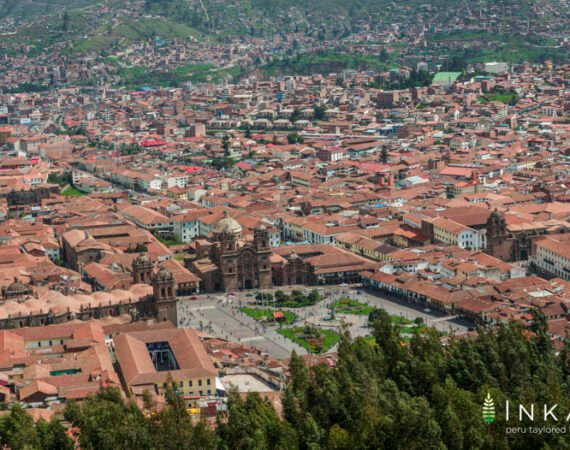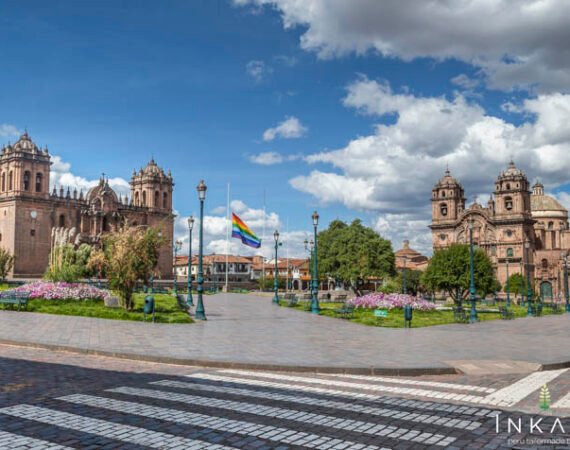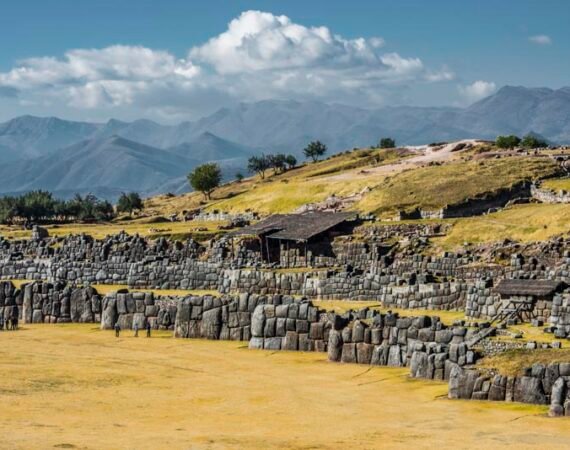Details
With a population of some 700,000 local people, who keep the ancient Peruvian traditions alive, there are endless treasures to discover in Cusco. At an elevation of 3,400m (11,200ft), it is one of the world’s highest cities. Filled with cultural heritage and (literal) treasures, Cusco is home to some of the most beautiful and mysterious sites in the world.
Cocooned by six mountains – some of which are more than 6,000 meters high – and as the historic and cultural capital of the Incan Empire, Cusco is the oldest city in the Western hemisphere. Since 1983 it has been a UNESCO World Heritage Site and a major tourist destination, receiving almost 2 million visitors each year.
With a history dating back to the 12th century, within 200-years of Incan rulership Cusco was to be referred to as the ‘Navel of the World’, as all roads in the Incan Empire ran through Cusco. It also owes its unique layout, which takes the form of a Puma, to the Incas, who had visionary architectural abilities.
Incan mythology attributes the founding of the city to the Inca Manco Cápac; according to legend the golden scepter that the Sun gave to him was thrust into the fertile soil of Cusco, to designate the site of the Capital. After five-hundred years of successful rulership, Peru was invaded in 1534 by the Spanish under Francisco Pizarro.
The cultural weaving of modern Spanish and prehistoric Quechua has transformed every aspect of Peruvian culture and, particularly and perhaps most fascinatingly, is apparent in the Andean capital of Cusco. The result today is a colorful city that thrives with a measure of contradiction. Many of the city’s finest Inca architectural treasures were so masterfully constructed out of local stone that they remain in great shape today, having withstood nearly a thousand years of use. These ancient stones are laid cheek-to-cheek with the Baroque style favored by conquistadores, creating a magical and deep dichotomy which lives in the fabric of the city.
Today, the stately and lively Plaza de Armas with its huge archways, carved wooden balconies, shops, restaurants, cathedrals and La Compañia de Jesús church – an incredibly sculpted marble monument, clustered around lawns and flower beds and framed by the surrounding Andes, is the focal point of Cusco. With its quaint cobbled streets, hidden plazas and endless churches and temples, Cusco is an amazing amalgam of Inca capital and colonial city.
Under the Incan rulership, the plaza used to be twice its current size, and only recently roadworks in the Calle Plateros have exposed extensive Incan foundations/ruins. Now, the undisputed archaeological capital of the Americas, Cusco (or Cuzco) is also a city of entrepreneurs with a diverse mixture of hotels, restaurants, women in traditional woven skirts offering to be photographed with baby llamas, alongside expensive boutiques selling the finest alpaca knits for small fortunes. On the pavements are stoic women, sitting for hours at a time offering trinkets, cigarettes, stones and other small items for sale, alongside a surprisingly small number of beggars. In short, tourism is now the main wellspring of the local economy.
Day by Day
Our full-day program begins by visiting the local San Pedro market, which displays the most traditional style of trade. Packed with local people buying food products, plus many trinkets and beautiful things for tourists, this is a good chance to see the huge diversity of potatoes, quinoa, corn, and many other kinds of food native to the region.
After brunch, we will continue by car to Saqsayhuaman, an impressive pre-Incan site built using giant rocks, located on top of the Cusco Valley, with incredible views and rich with the history of an ancient civilisation. Very close to this site is the religious and ceremonial site of Qenqo, used particularly in the Winter Solstice.
We get back to the City to visit the most important temple of the Incan Empire called Q’oricancha – meaning Temple of the Sun. Once brimming with gold in a time long ago, human sacrifices were made to the Sun Gods here, to bring good fortune to the land and create bountiful harvests for the whole Empire.
In the afternoon we will visit the incredible La Compañia cathedral, a Jesuit church in Cusco, built atop an Incan palace. This is one of the most spectacular examples of Spanish-Baroque architecture in Peru, and had a great impact on architecture in the Southern Andes.
General Information
- Launch and ticket to the sites.
- Transportation.
- Bilingual guide in Spanish and English.
- Food not mentioned.
- Extra drinks.
- Tip support staff.
- Others not mentioned.
- Waterproof jacket/rain poncho (rainy season).
- Passport.
- Comfortable shoes.
- Hat for the sun.
- Sunblock cream, +50 recommended.
- Personal medication.
- Camera with spare batteries.
- Cash in soles for souvenirs, extra food and drinks and tips.
Sustainable Travel
Low-impact Tours
On this program we strive to preserve and protect delicate routes and natural habitats in order to not enhance mass-tourism in remote areas and minimise the effects of our presence in such areas. We therefore choose routes for the program that are specific for Tourism and trekking and avoid exploring remote places.
Cultural Awareness
It generally works best when there is smaller scale, slower growth, and greater involvement by our local communities in all steps of the tourism development process. We work mainly with small business and communities ensuring that most of the profit benefits actual people, and not just big organizations.
Gallery
Recommended Tours
DOWNLOAD THIS TOUR
INQUIRE OR BOOK THIS TOUR
Do you want inquire further about this trip, talk with us or simply book this trip?



